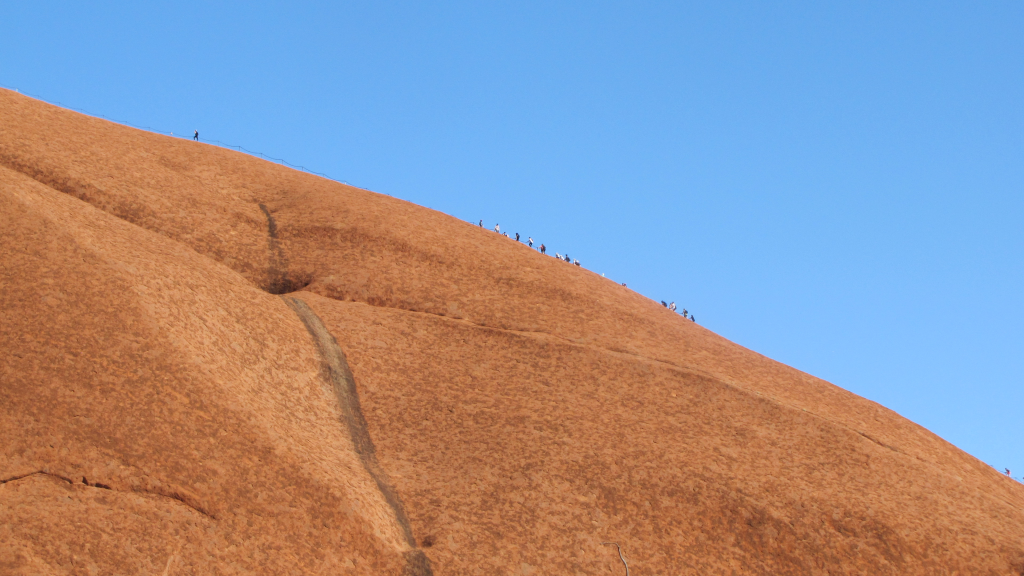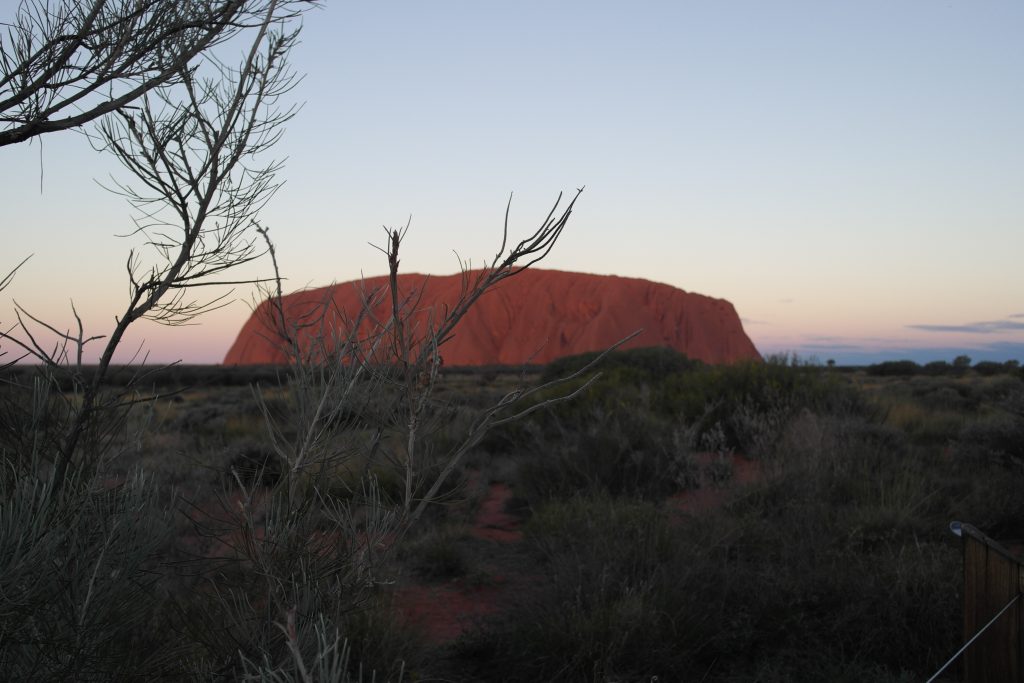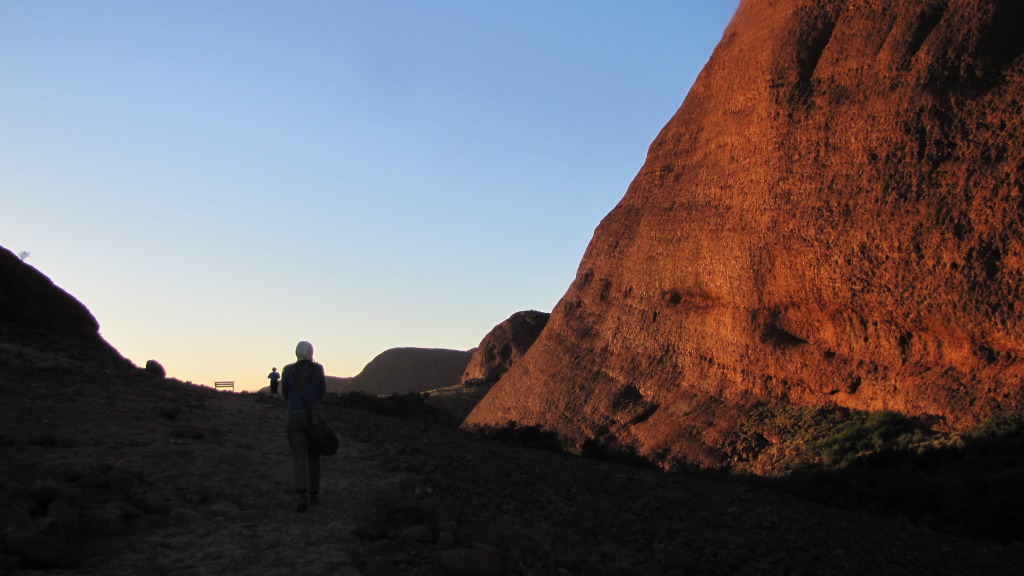

In the fall of 2017, the board of Uluru-Kata Tjuta National Park voted unanimously to ban the climbing of Uluru—it’s about time.
For the uninitiated, Uluru is a large sandstone rock formation in Australia’s Northern Territory. Standing next to it feels like you’re in the colossal outfield of some cosmic ball game. With nothing but rusted sand and brush around it for miles, it juts out of the earth, a huge, forgotten plaything of giants. It’s monolithic. Its presence is a near-anomaly.
The ban, which is set to be imposed in October 2019, might disappoint tourists, but it shouldn’t. Frankly, it’s high time that climbing this UNESCO world heritage site was banned—here’s why, and what to do instead!
R-E-S-P-E-C-T

Uluru, which is also known as Ayers Rock, is sacred Aboriginal ground. You probably wouldn’t sing at the top your lungs in Notre Dame Cathedral—this is pretty much that with more selfies. The local Anangu people believe that Uluru was left behind by the ancestral beings who created the land itself. They believe that the spirits of these beings still live there, and it’s the Anangu’s sacred duty to look after the site.
Imagine trying to do your job with a bunch of backpackers walking all over your metaphorical desk. Now, imagine that desk is a church, mosque, or temple. (Or 10,000 signed Beyonce posters—whatever metaphor drives it home.) Part of the privilege of travel is to witness new cultures in their pure form, and climbing Ayers Rock is literally stomping all over Aboriginal spirituality. Boo, no. Ban: 1, Climb: 0.
It’s Freakin’ Dangerous

As if respecting the locals isn’t enough motivation, climbing Uluru is also dangerous. There are warnings everywhere around the site, declaring that the ascent is perilous. Ayers Rock is 340 metres high. If you factor in Australia’s blistering heat or high winds, you’re looking at a possibly deadly climb.
Just back in 2010, a 54-year-old man died, collapsing near the base of the rock. Beyond that, 35 other people have perished in the attempt since 1958. There are very literally other hills to climb—it’s about time people forcibly sat this one out.
According to locals, disturbing the site is also bad for your karma. Tourists who have taken rocks from the site are said to be cursed with misfortune. Park rangers get packages sending back stolen “sorry rocks” or twigs nearly every day. So, do you feel lucky?
No Climbing, No Problem

Some think the ban will affect tourism, BUT there’s still plenty of things to see and do in the area that make for an amazing visit!
You can hike all the way around it, taking in the magnificence of the landscape from the safety of the ground. There’s also an on-site museum, which shares the legends and the history of this natural wonder. (Keep an eye out for beautiful Aboriginal art in the gift shop!) Another great hike is the nearby Valley of the Winds—something we already wrote about in our Australian travel guide. It’s about TIME the Olgas got their time to shine!
Shutting down the climbing of Uluru is a local victory and a sign of more understanding times. It ensures that the integrity of this sacred site will be preserved for the Aboriginal locals and future visitors alike.
The best view isn’t from the top of anyway—it’s the breathtaking sight of the sun rising or setting over this ethereal, natural wonder.



